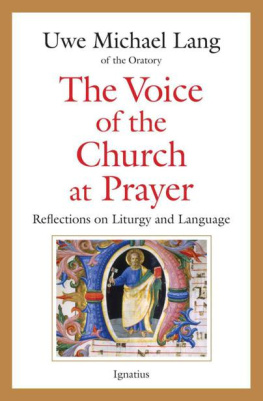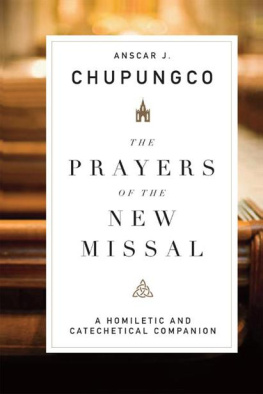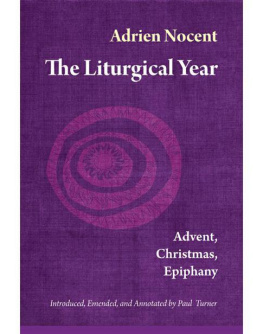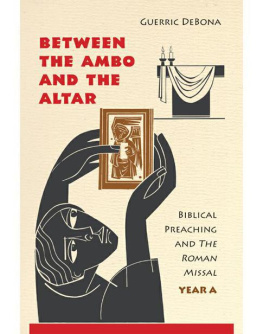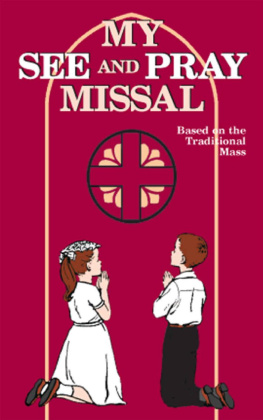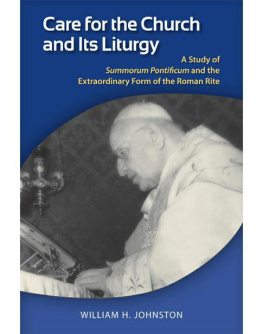The Catholic Church - General Instruction of the Roman Missal
Here you can read online The Catholic Church - General Instruction of the Roman Missal full text of the book (entire story) in english for free. Download pdf and epub, get meaning, cover and reviews about this ebook. year: 2011, publisher: USCCB, genre: Religion. Description of the work, (preface) as well as reviews are available. Best literature library LitArk.com created for fans of good reading and offers a wide selection of genres:
Romance novel
Science fiction
Adventure
Detective
Science
History
Home and family
Prose
Art
Politics
Computer
Non-fiction
Religion
Business
Children
Humor
Choose a favorite category and find really read worthwhile books. Enjoy immersion in the world of imagination, feel the emotions of the characters or learn something new for yourself, make an fascinating discovery.
- Book:General Instruction of the Roman Missal
- Author:
- Publisher:USCCB
- Genre:
- Year:2011
- Rating:4 / 5
- Favourites:Add to favourites
- Your mark:
- 80
- 1
- 2
- 3
- 4
- 5
General Instruction of the Roman Missal: summary, description and annotation
We offer to read an annotation, description, summary or preface (depends on what the author of the book "General Instruction of the Roman Missal" wrote himself). If you haven't found the necessary information about the book — write in the comments, we will try to find it.
The Catholic Church: author's other books
Who wrote General Instruction of the Roman Missal? Find out the surname, the name of the author of the book and a list of all author's works by series.
General Instruction of the Roman Missal — read online for free the complete book (whole text) full work
Below is the text of the book, divided by pages. System saving the place of the last page read, allows you to conveniently read the book "General Instruction of the Roman Missal" online for free, without having to search again every time where you left off. Put a bookmark, and you can go to the page where you finished reading at any time.
Font size:
Interval:
Bookmark:

including Norms for the Distribution and Reception of Holy Communion under Both Kinds in the Dioceses of the United States of America
and Universal Norms on the Liturgical Year and the General Roman Calendar
United States Conference of Catholic Bishops | Washington, DC
CHAPTER I
The Importance and Dignity of the Celebration of the Eucharist
CHAPTER II
The Structure of the Mass, Its Elements, and Its Parts
CHAPTER III
Duties and Ministries in the Mass
CHAPTER IV
The Different Forms of Celebrating Mass
CHAPTER V
The Arrangement and Ornamentation of Churches for the Celebration of the Eucharist
CHAPTER VI
The Requisites for the Celebration of Mass
CHAPTER VII
The Choice of the Mass and Its Parts
CHAPTER VIII
Masses and Prayers for Various Needs and Occasions and Masses for the Dead
CHAPTER IX
Adaptations within the Competence of Bishops and Bishops Conferences
CHAPTER I
The Liturgical Year
CHAPTER II
The Calendar
N ovember 27, 2011, marks a significant date in the liturgical life of the Church in the United States as the Roman Missal, Third Edition , is introduced and put into use for the celebration of the Eucharist. This brings to conclusion the work of more than ten years of research, translation, preparation, and study. The implementation of the new translation of the prayers of the Mass is probably the most significant change in the liturgy since the introduction of the novus ordo Missal of Pope Paul VI in 1969.
The text of the General Instruction of the Roman Missal (GIRM) from the Missale Romanum, editio typica tertia , was translated and approved for the Dioceses of the United States in 2003 and was subsequently published as part of the United States Conference of Catholic Bishops (USCCB) Liturgy Documentary Series. The final text of the Roman Missal, Third Edition , for use in the Dioceses of the United States and approved in 2010, includes a new translation of the GIRM. The 2003 text was intended as a provisional translation, and in subsequent years other English-language Conferences of Bishops issued their own translations of the GIRM. The translation contained here and also in the ritual edition of the Roman Missal, Third Edition , is now the single official translation for the English-speaking world.
Also included in this edition are two other valuable documents: The Universal Norms for the Liturgical Year and the Roman Calendar and the Norms for the Distribution and Reception of Holy Communion under Both Kinds for the Dioceses of the United States of America , both of which also appear in front matter of the Roman Missal, Third Edition . Together with the GIRM these documents provide a comprehensive overview and instruction for the celebration of the Mass.
Pope Benedict XVI reminds the Church that the Liturgy follows the ancient axiom, Lex orandi, lex credendi (the law of faith is the law of belief). Not only is it a matter of words that communicate the faith of the Church, but the way in which the Liturgy is celebrated witnesses to what we believe.
Pope Benedict explains:
These texts contain riches which have preserved and expressed the faith and experience of the People of God over its two-thousand-year history. Equally important for a correct ars celebrandi is an attentiveness to the various kinds of language that the liturgy employs: words and music, gestures and silence, movement, the liturgical colors of the vestments. By its very nature the liturgy operates on different levels of communication which enable it to engage the whole human person. ( Sacramentum Caritatis , no. 40)May our study and observance of liturgical norms and rubrics continue to foster prayerful and fruitful celebration of the Eucharist, that this moment in the renewal of the Liturgy will strengthen us for the ongoing renewal of the Church.
Rev. Richard B. Hilgartner
Executive Director
USCCB Secretariat of Divine Worship
1. As Christ the Lord was about to celebrate with the disciples the paschal supper in which he instituted the Sacrifice of his Body and Blood, he commanded that a large, furnished upper room be prepared (Lk 22:12). Indeed, the Church has always judged that this command also applied to herself whenever she decided about things related to the disposition of peoples minds, and of places, rites, and texts for the Celebration of the Most Holy Eucharist. The present norms, too, prescribed in keeping with the will of the Second Vatican Council, together with the new Missal with which the Church of the Roman Rite will henceforth celebrate the Mass, are again a demonstration of this same solicitude of the Church, of her faith and her unaltered love for the supreme mystery of the Eucharist, and also attest to her continuous and consistent tradition, even though certain new elements have been introduced.
2. The sacrificial nature of the Mass, solemnly defended by the Council of Trent, because it accords with the universal tradition of the Church,
What is taught in this way by the Council is consistently expressed in the formulas of the Mass. Moreover, the doctrine which stands out in the following sentence, already notable and concisely expressed in the ancient Sacramentary commonly called the Leonine for whenever the memorial of this sacrifice is celebrated the work of our redemption is accomplished
So, in the new Missal the rule of prayer ( lex orandi ) of the Church corresponds to her perennial rule of faith ( lex credendi ), by which we are truly taught that the sacrifice of his Cross and its sacramental renewal in the Mass, which Christ the Lord instituted at the Last Supper and commanded his Apostles to do in his memory, are one and the same, differing only in the manner of their offering; and as a result, that the Mass is at one and the same time a sacrifice of praise, thanksgiving, propitiation, and satisfaction.
3. Moreover, the wondrous mystery of the real presence of the Lord under the Eucharistic species, confirmed by the Second Vatican Council is proclaimed in the celebration of the Mass, not only by the very words of consecration by which Christ is rendered present through transubstantiation, but also with a sense and a demonstration of the greatest reverence and adoration which strives for realization in the Eucharistic liturgy. For the same reason, the Christian people are led to worship this wondrous Sacrament through adoration in a special way on Thursday of the Lords Supper in Holy Week and on the Solemnity of the Most Holy Body and Blood of Christ.
4. In truth, the nature of the ministerial Priesthood proper to the Bishop and the Priest, who offer the Sacrifice in the person of Christ and who preside over the gathering of the holy people, shines forth in the form of the rite itself, on account of the more prominent place and function given to the Priest. The essential elements of this function are set out and explained clearly and extensively in the Preface for the Chrism Mass on Thursday of Holy Week, the day, namely, when the institution of the Priesthood is commemorated. For in the Preface is made clear how the conferral of Priestly power is accomplished through the laying on of hands; and, by the listing one by one of its duties, that power is described which is the continuation of the power of Christ, the High Priest of the New Testament.
5. Moreover, by this nature of the ministerial Priesthood, something else is put in its proper light, something certainly to be held in great esteem, namely, the royal Priesthood of the faithful, whose spiritual sacrifice is brought to completion through the ministry of the Bishop and the Priests, in union with the Sacrifice of Christ, the sole Mediator.
Next pageFont size:
Interval:
Bookmark:
Similar books «General Instruction of the Roman Missal»
Look at similar books to General Instruction of the Roman Missal. We have selected literature similar in name and meaning in the hope of providing readers with more options to find new, interesting, not yet read works.
Discussion, reviews of the book General Instruction of the Roman Missal and just readers' own opinions. Leave your comments, write what you think about the work, its meaning or the main characters. Specify what exactly you liked and what you didn't like, and why you think so.

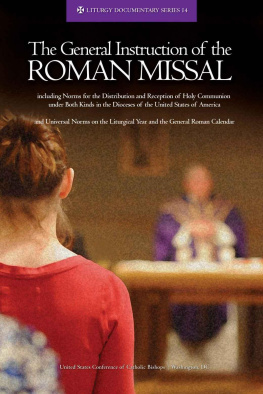
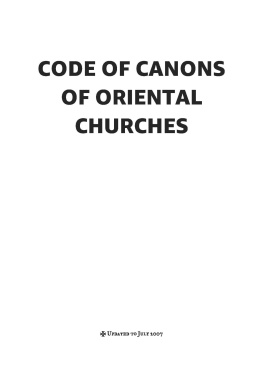
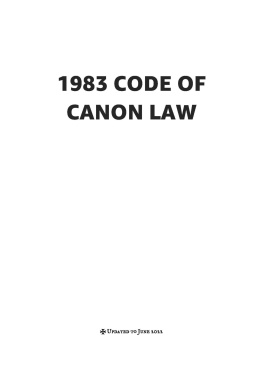
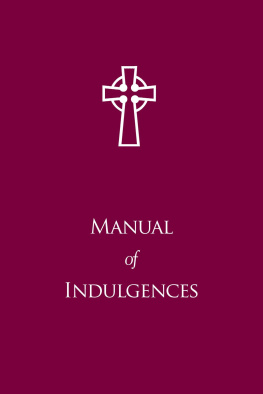
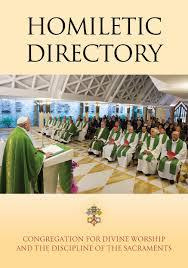
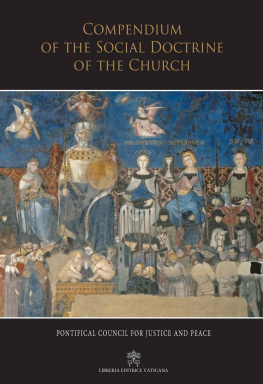

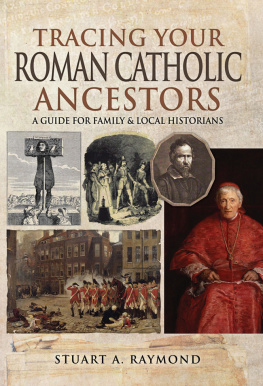


![Pope John XXIII - The Roman Missal [1962]](/uploads/posts/book/272720/thumbs/pope-john-xxiii-the-roman-missal-1962.jpg)
